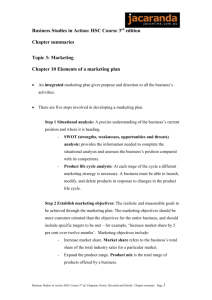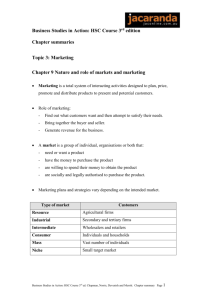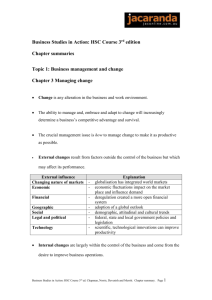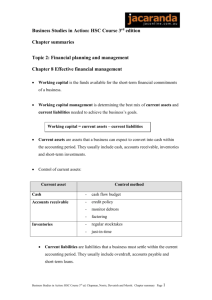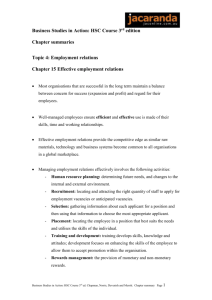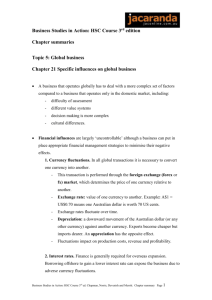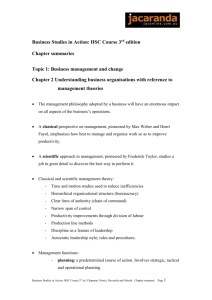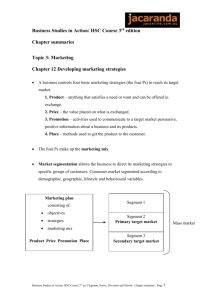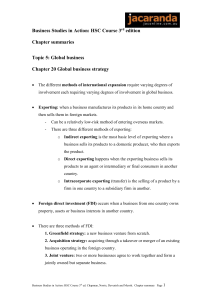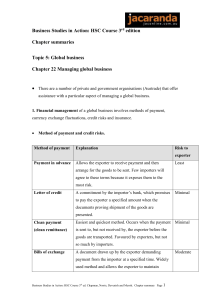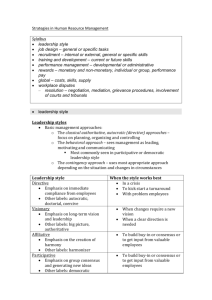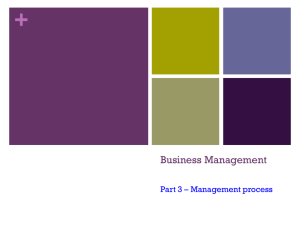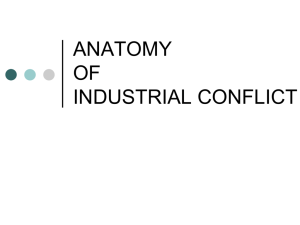Business Studies in Action: HSC Course 3rd edition
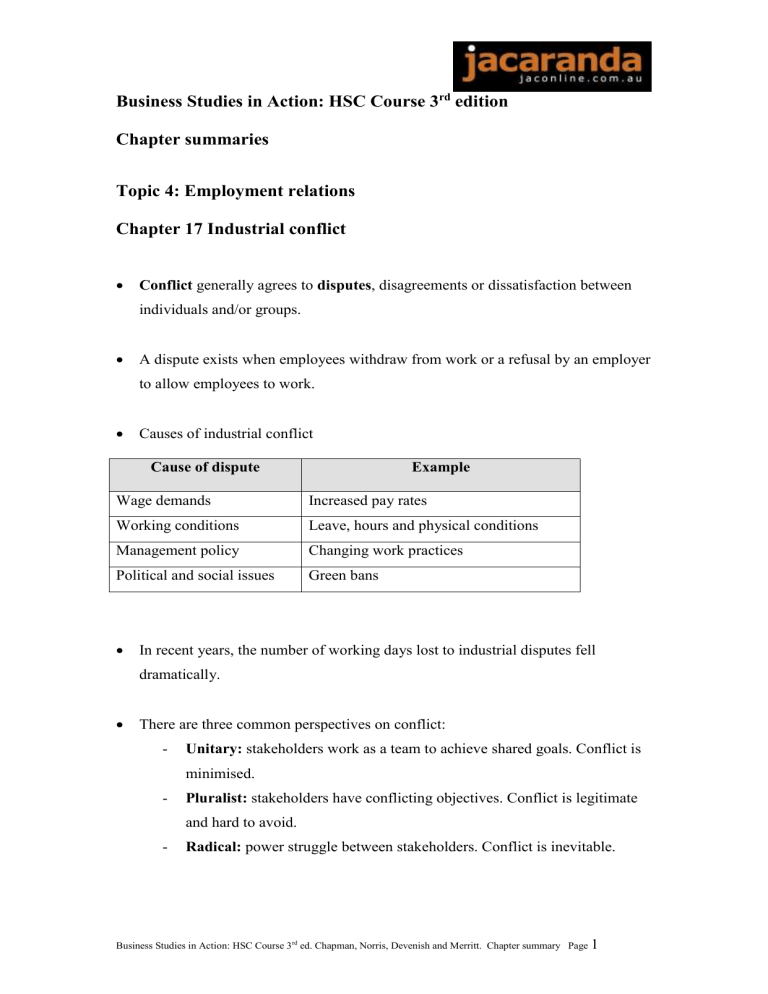
Business Studies in Action: HSC Course 3
rd
edition
Chapter summaries
Topic 4: Employment relations
Chapter 17 Industrial conflict
Conflict generally agrees to disputes , disagreements or dissatisfaction between individuals and/or groups.
A dispute exists when employees withdraw from work or a refusal by an employer to allow employees to work.
Causes of industrial conflict
Cause of dispute Example
Wage demands
Working conditions
Increased pay rates
Leave, hours and physical conditions
Management policy Changing work practices
Political and social issues Green bans
In recent years, the number of working days lost to industrial disputes fell dramatically.
There are three common perspectives on conflict:
Unitary: stakeholders work as a team to achieve shared goals. Conflict is minimised.
Pluralist: stakeholders have conflicting objectives. Conflict is legitimate and hard to avoid.
Radical: power struggle between stakeholders. Conflict is inevitable.
Business Studies in Action: HSC Course 3 rd ed. Chapman, Norris, Devenish and Merritt. Chapter summary Page
1 Page 1
Types of industrial action:
Overt (highly visible)
Lockout: employers refuse employees admission
Covert (not highly visible)
Absenteeism: unapproved absence form work
Picket: employees stop entry into workplace
Sabotage: vandalism and theft
Strike: employees withdraw their labour Turnover: staff resignations
Bans: selected tasks not performed Exclusion from decision-making: inviting all staff to meetings not
Work-to-rule: employees refuse to perform additional duties
The key stakeholders involved in resolving disputes include employees, employers, governments, trade unions, employer associations and industrial tribunals.
Since the introduction of the Australian Workplace Relations Act 1996 a move towards employers and employees resolving disputes without outside assistance.
Many firms try to develop a corporate culture in which disputes are minimised through cooperative working relationships and by training staff in procedures, policies and guidelines for managing disputes.
Dispute resolution procedures:
Commences with grievance procedures.
Business Studies in Action: HSC Course 3 rd ed. Chapman, Norris, Devenish and Merritt. Chapter summary Page
2 Page 2
Negotiation: discussion between the parties to reach a solution.
Mediation: objective third person assists parties to reach a solution.
Australian Industrial Relations Commission (AIRC)
Conciliation: mediation involving a meeting of the parties to reach a solution.
Arbitration: commissioner makes a legally binding decision.
Common law: disputes settled by court action when no relevant employment legislation exists.
Business/division closure: if dispute is impossible to resolve.
Costs and benefits of industrial conflict
Type
Financial
Costs
lost production and wages
business closure
Personal
Social
stress, insecurity and fear
community anger
Political voter dissatisfaction
International loss of export markets
Benefits
increased productivity after changes implemented
improved working conditions
work problems resolved
new career opportunities
better employment policies
workplace reforms improve global competitiveness
Business Studies in Action: HSC Course 3 rd ed. Chapman, Norris, Devenish and Merritt. Chapter summary Page
3 Page 3
Business Studies in Action: HSC Course 3 rd ed. Chapman, Norris, Devenish and Merritt. Chapter summary Page
4 Page 4
